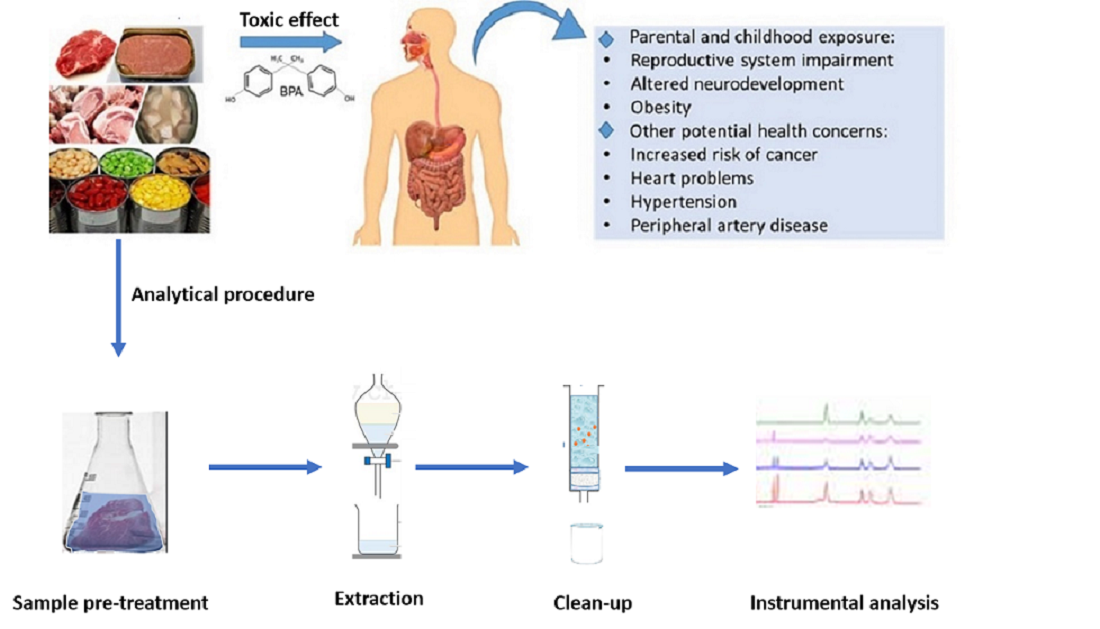BPA is a commonly used compound in many industries and has versatile applications in polycarbonate plastics and epoxy resins production. BPA is classified as endocrine-disrupting chemical which can hamper fetal development during pregnancy and may have long term negative health outcomes in humans. Dietary sources, main route of BPA exposure, can be contaminated by the migration of BPA into food during processing. The global regulatory framework for using this compound in food contact materials is currently not harmonized. This review aims to outline, survey, and critically evaluate BPA contamination in meat products, including level of BPA and/or metabolites present, exposure route, and recent advancements in the analytical procedures of these compounds from meat and meat products. The contribution of meat and meat products to the total dietary exposure of BPA ranges between 10 and 50% depending on the country and exposure scenario considered. From can lining materials of meat products, BPA migrates towards the solid phase resulting higher BPA concentration in solid phase than the liquid phase of the same can. The analytical procedure is comprised of meat sample pre-treatment, followed by cleaning with SPE, and chromatographic analysis. Considering several potential sources of BPA in industrial and home culinary practices, BPA can also accumulate in non-canned or raw meat products. Very few scientific studies have been conducted to identify the amount in raw meat products. Similarly, analysis of metabolites and identification of the origin of BPA contamination in meat products is still a challenge to overcome.

